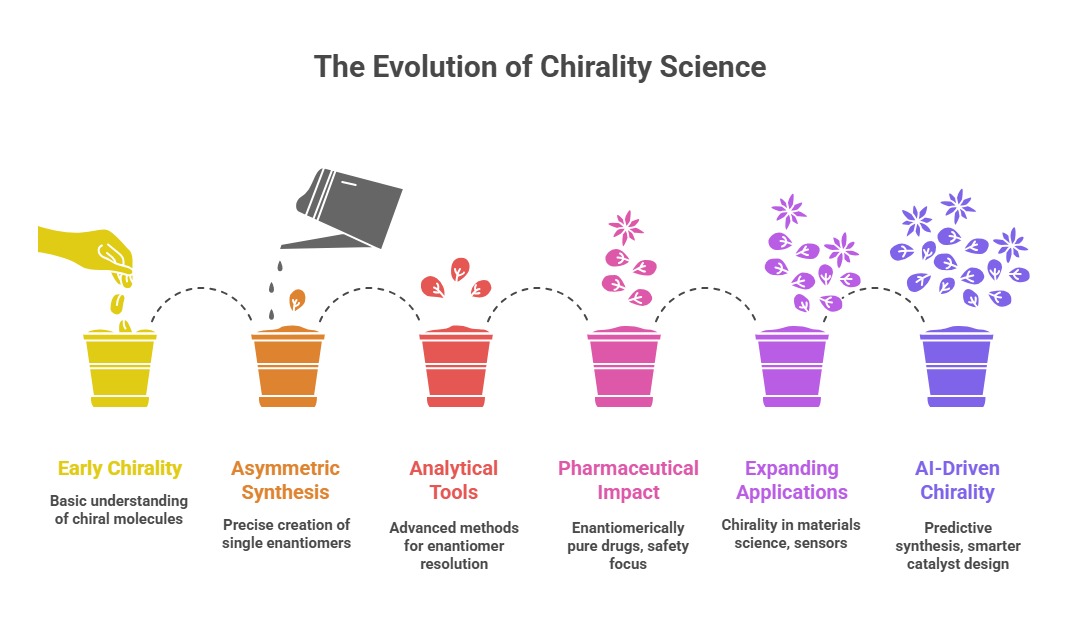

Chirality - this simple idea that a molecule can be left- or right-handed - has become one of the most powerful forces shaping modern chemistry, especially in the pharmaceutical world. For researchers and students working in medicinal and chiral chemistry, it’s hard to overstate how much progress has been made in the past few years.
Today, we’re no longer just interested in whether a compound is chiral; we care deeply about which enantiomer we’re working with, how it behaves in the body, and how we can make it more efficiently. Asymmetric synthesis has come a long way - thanks to smarter catalysts, biocatalysts, and even metal-free organocatalysts, we're now able to make single-enantiomer compounds with remarkable precision. That’s not just good science - it’s good medicine, especially when one enantiomer is therapeutic and the other is inert or even toxic.
Analytical tools have also stepped up. Where it once took a mix of trial and error and expert intuition to resolve enantiomers, we now have a full arsenal of chiral chromatographic methods, NMR tricks, and spectroscopic techniques to help us see exactly what we’re working with. Add in computational chemistry and predictive modelling, and suddenly we’re not just reacting - we’re planning with confidence.
In the pharmaceutical space, this has led to a clear trend: fewer racemic mixtures, more enantiomerically pure drugs, and a heightened regulatory focus on stereochemistry. Understanding stereoselective metabolism, off-target activity, and enantiospecific toxicity is no longer optional—it’s central to drug safety and efficacy. As a result, more teams are thinking chiral right from the start of the design process.
But chirality isn’t stopping at drug molecules. It’s starting to influence fields like materials science and molecular engineering. Chiral sensors, supramolecular assemblies, and responsive materials are unlocking new ways to detect, deliver, and interact with biological systems - all based on subtle twists in molecular geometry.
And now, with AI and machine learning entering the picture, we’re beginning to see what the next chapter might look like: predictive synthesis, virtual screening for chiral selectivity, and smarter catalyst design. It’s still early days, but the potential is huge.
For students and researchers alike, keeping up with the latest in chiral chemistry isn’t just about staying relevant - it’s about being part of a scientific story that’s still unfolding. From bench to bedside, chirality is shaping how we understand molecules, how we make them, and how we use them to improve lives.